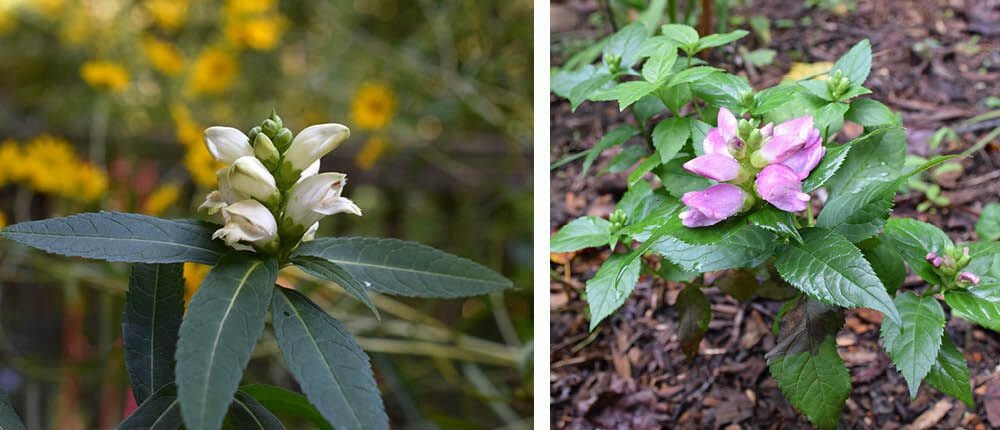Turtlehead (Chelone sp.) plants are fairly modest looking perennials most of the year, often overlooked in their preferred moist habitats. The simple, oppositely arranged leaves get lost in what can be a crowded arrangement of other vegetation such as jewelweed (Impatiens capensis) and cardinal flower (Lobelia cardinalis). Late summer is when turtleheads shine as clusters of fat buds in a compact spike turn into exotic-looking flowers shaped like the head of turtle. Bumble bees are especially fun to watch as they squeeze between the petals to get to the nectar, delighting kids and adults alike.
According to USDA, there are four species of turtlehead, all of which may grow in Georgia, mostly in North Georgia. The range of the most common one, white turtlehead (Chelone glabra), does extend into the upper Coastal Plain. Despite its name, white turtlehead can have a pink tip. Other species have pink flowers, some deeply so. Chelone lyonii ‘Hot Lips’ is a cultivar selected for its magenta color and dark green leaves and might be found at fall plant sales.
In the garden, include this rhizomatous (spreading) perennial in a spot with good sun and moisture for best results. Pair it with other wet-loving perennials like those mentioned earlier. In my garden I have rain lilies (Zephyranthes atamasco), Virginia bluebells (Mertensia virginica), and spider lilies (Hymenocallis occidentalis) nearby, and they provide blooms at other times of the year. If it spreads too much, it’s a good plant to share with friends or donate to our chapter plant sales.


